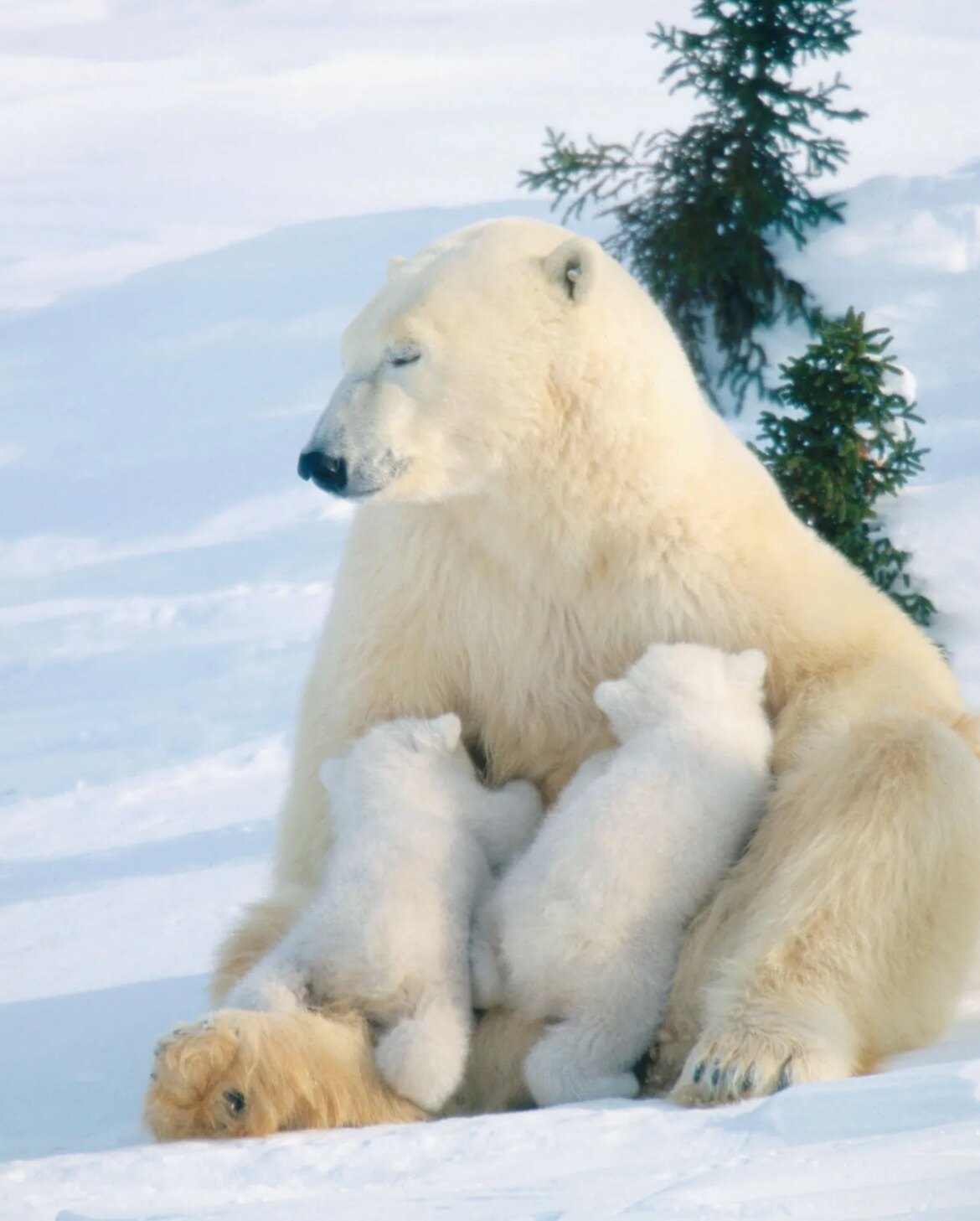Mammals are a class of vertebrate animals characterised by the presence of mammary glands which in females produce milk for feeding (nursing) their young, a neocortex (a region of the brain), fur or hair, and three middle ear bones. These characteristics distinguish them from reptiles and birds, from which they diverged in the late Triassic period, 201–230 million years ago. The earliest mammals arose during the Mesozoic era; the oldest known mammal species is Juramaia sinensis, from 164 million years ago in the Jurassic period.
The cladogram shows the placement of mammals among other tetrapods (four-limbed vertebrates).
The number of extant mammal species is approximately 5,400. Newborn infants typically have very fine hair called lanugo that covers most of their body; many adults develop longer terminal hairs on various parts of their bodies as they reach puberty. Adults also possess sweat glands and sebaceous glands; some have specialized scent glands at different locations on their bodies. Mammals breathe air through lungs that are ventilated either by means of muscular movements or by rib cages that expand and contract with each breath. Although both egg-laying monotremes and live-bearing viviparous mammals are found on all continents except Antarctica, most mammals inhabit Eurasia and Africa – especially rodents, bats and primates – with significant populations also present in North America and South America. Smaller numbers occur in Australasia including marsupials such as kangaroos while there are only two native species – one each on Madagascar and Hawaii respectively. About fifty percent[citation needed]
of mammal species can be found in just ten countries: United States (4200), Brazil (3700), Mexico (3400), Australia (2800), Indonesia (2400), China (2000), Congo basin[clarification needed]
(1900), Columbia[clarification needed]
(1700) India (1600) Russia(1400).[failed verification] The word “mammal” is modern, loaned into English from French mamelle (“breast”) or directly from Latin mamma (“teat, breast”). Both derive via Proto-Indo-European *momʰ- “breast” from ProtoUralic *muŋkä “breast”. In scientific nomenclature used today for living organisms after 1758, they were grouped together with birds under Linnaean taxonomy’s Class Aves until Carl Linnaeus moved them to separate classes in his 10th edition of Systema Naturae published in 1758.:239 In 1827 William Elford Leach applied to this group the name Mammalia after all members having been discovered so far had mammalian characteristics.:289 He divided this new class into four orders: Primates,:126 Pachydermata,:316 Cetacea,:355 Edentata.:516 All these groups included many extinct genera since Linnaean times but because Leach’s grouping was made before any dinosaurs were discovered it excludes all land vertebrates that arose during what is now known as Mesozoic Era thus excluding all currently extant non-avian dinosaurs plus many other early groups such as crocodiles , lizards , snakes , turtles etc., which do not fall within any modern definition for mammal yet appeared earlier than true mammals did . Etymology aside , since its founding Linnaean taxonomy has been extensively modified several times including reclassifications into more natural evolutionary based clades ; see Modern systematics . For example , whales were previously grouped with fish but later recognized as distinct enough to warrant their own separate order Cetacea . This change was made even though both cetaceans breath air through lungs like other mammals do rather than extract oxygen dissolved water like fish . Also , some authorities consider subclassifications within class Mammalia moot given evidence recent molecular studies indicate placental & marsupial divergence much further back time ; see Marsupial lion for an example this kind disagreement over classification .”
Mammal
59


